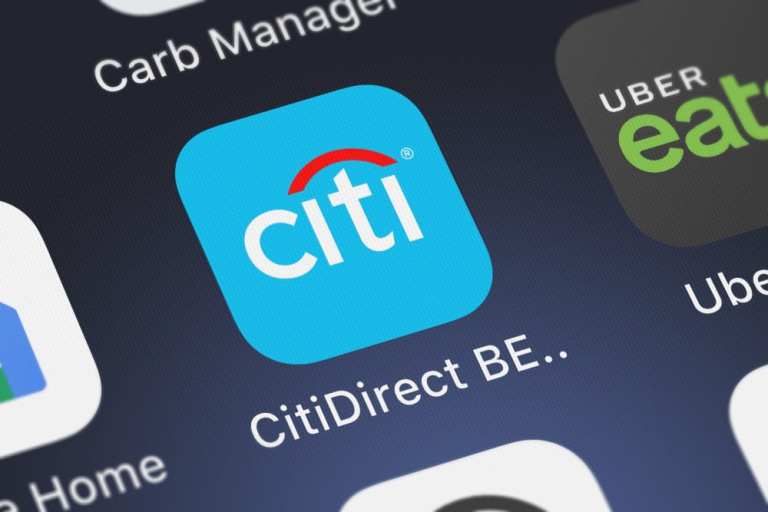The pandemic is accelerating the shift to digital at speeds no one could have imagined just a few months ago.
But there have been gaps along with the pivot, where paper- and courier-based documents have held sway, and where signatures are required to get things done as companies and individuals interact with their financial institutions (FIs).
Citibank said last week that the use of its digital banking channels soared in the first quarter (and beyond), tied to a global phenomenon where untold numbers of individuals are working from home, and where lockdowns have rendered traditional financial services processes inoperable.
The company said it has expanded the reach of its CitiDirect BE Digital Onboarding platform, available in 42 countries and five languages. The solution, available through Citi Treasury and Trade Solutions (TTS), launched in February of last year in North America and in six countries across Europe.
Tapodyuti Bose, global head of digital channels and data at Citi TTS, told Karen Webster that clients across all kinds of businesses are experiencing changes to their business models and are creating direct electronic channels to interact with their customers. This in turn is disintermediating traditional distribution methods and supply chains in the process.
“Digital was becoming increasingly important,” he said – and the pandemic has served as a catalyst to hasten that adoption, and to bring analog processes toward streamlined functionality.
Advertisement: Scroll to Continue
“This has been a journey we have been on – which, given the turn of events that began to unfold earlier this year, took on a very serious tone and intent,” Bose noted.
Along the way, he added, what may have once been considered optional and interesting for Citi’s institutional clients – and, in particular, treasury departments – has become fundamental and critical.
On a high level, said Bose, Citi’s roadmap boils down to a simple strategy: to offer a financial platform for global commerce.
“There’s a big dose of data that brings much more intelligence into that commerce,” he said. “Therefore, we have to ensure that every part of the client journey is on some kind of a digital rail.”
That’s a wholesale shift that moves beyond prior efforts by corporates large and small to digitize day-to-day operations. In some cases, they’ve been converting paper documents into data, taking analog transactions into online banking or establishing host-to-host ERPs.
Now, said Bose, “even the tiniest bit of analog” can disrupt operations.
The Journey
The digitized journey for Citi’s clients starts even before onboarding, through identifying specific needs such as making payroll payments, forecasting cash flow or managing supply chains (and, by extension, supply chain finance).
“Then comes the next part of the journey, the next moment of truth, which centers on ‘now that I’ve decided on a particular solution, how do I onboard?'” said Bose. “And that onboarding must be conceived and executed completely digitally.”
That leads to corporate clients opening accounts through the CitiDirect BE Onboarding platform, and subsequently linking to a number of products.
The statistics show the magnitude of the shift.
Between March 2019 and March 2020, Citi has estimated a 24 percent increase in the total number of CitiDirect BE online and app users.
As Bose told Webster: “As you can imagine, the first part of the pandemic had an impact on our clients – as things changed, they were extremely challenged to figure out how their businesses could continue to work.”
The initial accelerated usage of Citi’s digital channels came as companies set COB (continuity of business) plans into motion, leveraging electronic signatures and streamlined documentation in a world where face-to-face meetings and “wet ink” signatures suddenly became impossible.
As manual processes are digitized, said Bose (and where Citi has reduced 97 percent of the terms and conditions contained in the onboarding experience), processes that would take weeks and even months, and were reliant on paper and multiple points of contact, can be compressed to a timeframe of just a few days.
Bose acknowledged that digitizing parts of client contingency situations presents a number of challenges. He noted that clients are located in far-flung geographies, and the use of technology such as e-signatures is governed by various local and national authorities.
In other cases, there are various mandates tied to disclosing beneficial ownership. Bose gave an example of when various regulatory bodies in different regions were processing approvals for Citi’s mobile platform using extended review timeframes, which sometimes spanned a year and a half due to regulatory concerns over biometrics and personnel data. But when the pandemic hit, the urgency was recognized by all parties and approvals accelerated dramatically, often within three days.
Beyond regulatory hurdles, Bose noted that challenges remain in getting corporates – among them the largest firms in the world – to fully embrace a digital-first mindset. That’s especially true with companies that are not digital-native and are trying to manage risk and liquidity.
Those companies may have completed at least part of the digital journey by centralizing treasury operations across different countries, but at this point are unsure of next steps amid changing business models.
Though they may have centralized treasury operations, said Bose, many larger firms have still been working out of fragmented ERP systems collected from several acquisitions of smaller firms.
“If you start with the technology, people get very uncomfortable. They say, ‘This is new. Maybe I don’t know what I don’t know. What’s it going to do to my job? Do I need to retrain myself?’”
Bose believes the key lies in illustrating how technology can help make treasurers’ day-to-day (professional) lives easier.
As more enterprises embrace work-from-home models, and as people are not physically present to make treasury management decisions, data can act as a great unifier. As Bose said of the continued transition toward client-facing digital channels: “Today, it’s the pandemic. Tomorrow, it’s a business requirement.”

